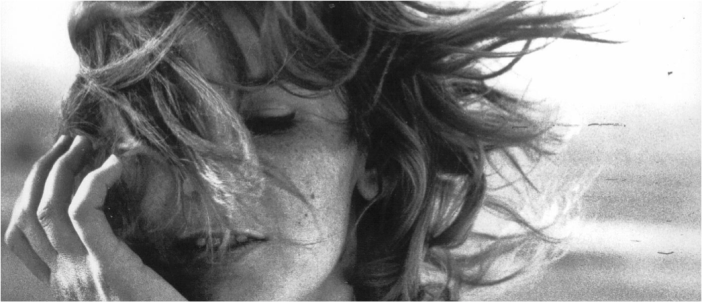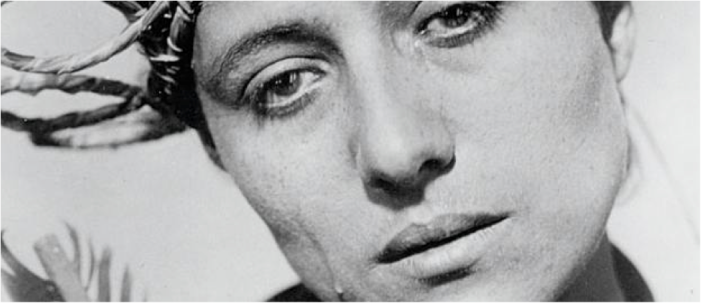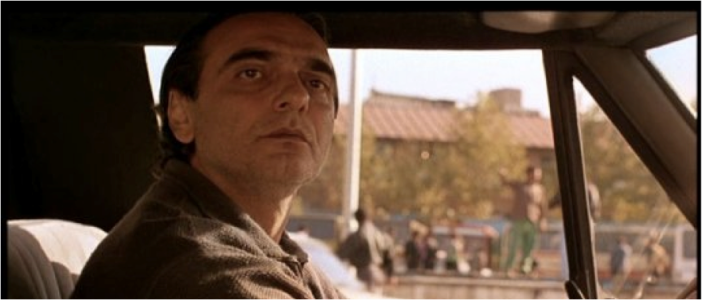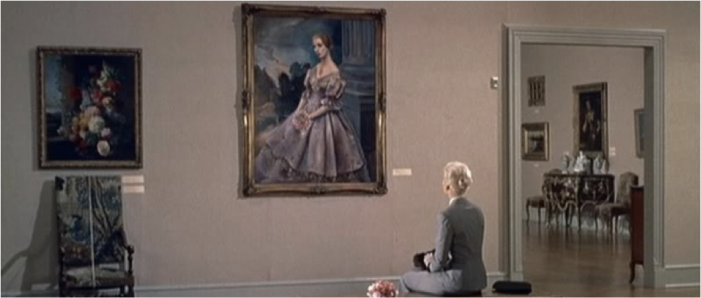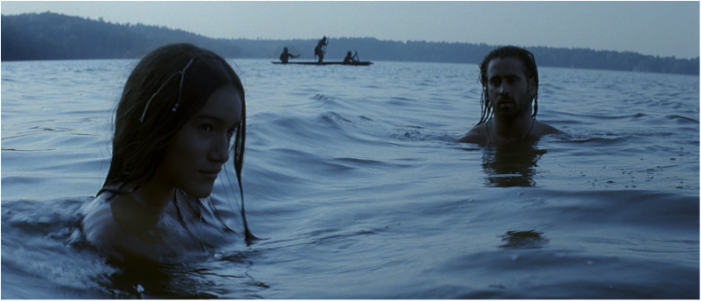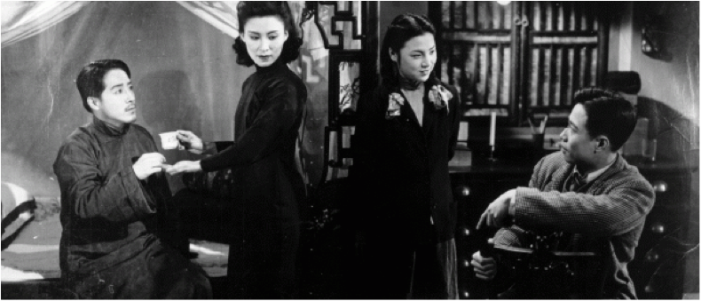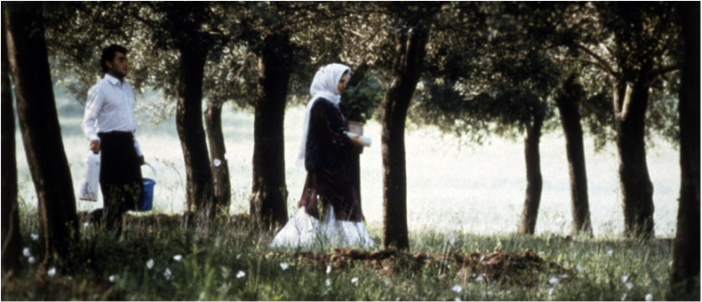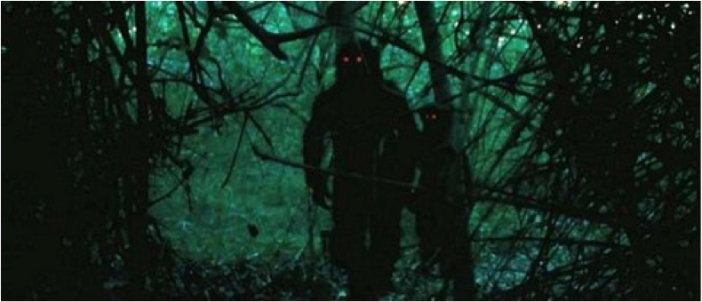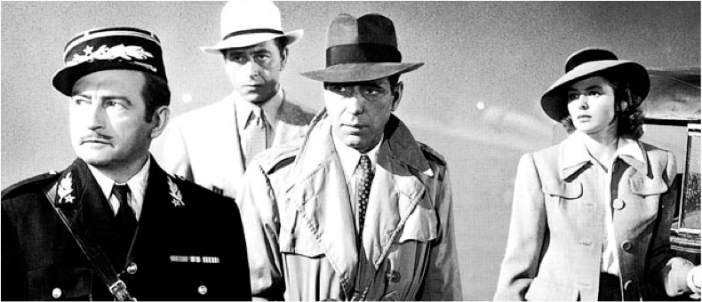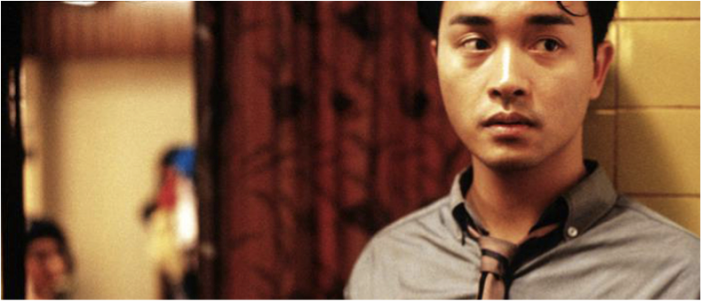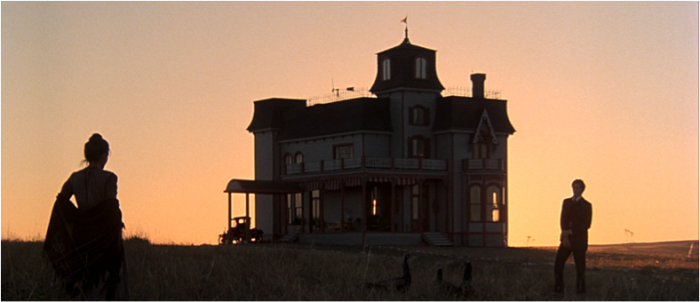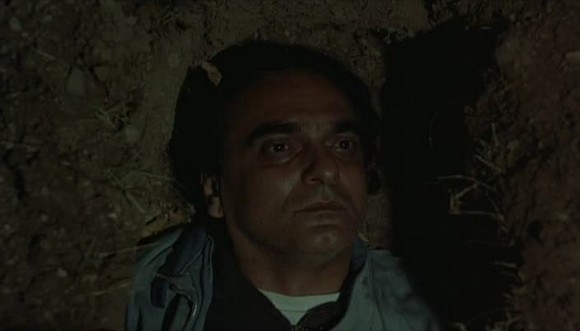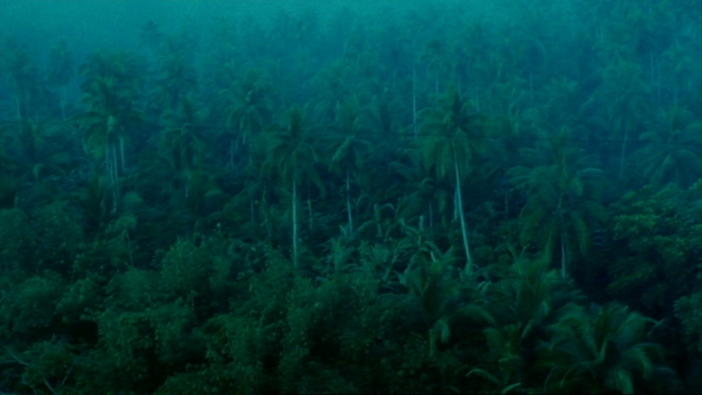And now the top ten!
10. The Thin Red Line (Dir. Terrence Malick, United States, 1998)
“I’ve seen another world.”
Terrence Malick’s return to film after a twenty-year hiatus found him furthering the vision he established with Days of Heaven. In many ways, The Thin Red Line is an apt successor to that gorgeous film and a furtherance of his growing majestic aesthetic. There is voiceover narration, but the increased number of voices amplifies the technique. Violence features heavily, but this story centers on an all-out war rather than just the actions of a few. The beauty of the natural world plays a prominent role, but here Malick offers it up as the salvation from human brutality. The Thin Red Line, then, represents the first convergence of the master’s major strengths and concerns. It stands as the greatness that both Badlands and Days of Heaven promised.
So, what then do we make of this violent, broken world? Malick never shies away from depicting destruction and despair – the film’s actual WWII-set backdrop ensures this grounding in the real world. He’s intent on showing that it is in fact humankind that has sown the seeds of its own demise, and this cruelty threatens to bring down the whole earth with it. But, significantly, Malick also reveals that where there is beauty, there is also hope. In the character of Private Witt, Malick offers redemption. The wonder-struck soldier embodies grace, kindness, and sacrificial love – the marks of true humanity, the fulfillment of goodness.
For a Hollywood war film featuring a slew of A-listers, The Thin Red Line is deeply philosophical, inherently spiritual, and breathtakingly beautiful as Malick’s camera captures the wonders of this world to counter those bent on destroying it. Beauty can’t be snuffed out, however, and in the film’s final hopeful shot Malick assures us that life always prevails.
09. La jetée (Dir. Chris Marker, France, 1962)
“There is no escape out of time.”
Made up of not more than a collection of photographs (and one brief, breathtaking clip of footage), Chris Marker’s La jetée somehow manages to be an utterly captivating sci-fi film that offers a fresh perspective on the oft-explored notion of time travel. Moreover, its very construct challenges the traditional ways in which we understand cinema and subsequently offers one of the medium’s most unique works of art. Marker’s film does indeed tell a story relying upon thought provoking voiceover narration and sound effects to accompany the stark black and white stills.
Time travel and post-apocalyptic settings are tired genre clichés today, but in Marker’s eschewal of filmed action or expository dialogue – both major flaws of similarly themed films – he arrives at something much more nuanced and philosophical. Instead of the cataclysmic, widespread implications of traveling through time, La jetée narrows its focus on the effects it might have on one time traveler. In a post-WWIII era, a man is chosen by a clandestine group of progressive scientists to visit both past and future in an attempt to rescue the present. He is haunted by one particular memory from his past that the scientists seek to exploit. When he begins to fall in love with a mysterious woman, his anchor to the past, he wonders what it might take to abandon the present and live with her in the past for good.
A love story and an exploration of the power that memories hold over us, La jetée is a remarkable and unforgettable film that has influenced works as disparate as action flicks, cartoons, and romantic comedies alike. It’s a beautiful meditation on the past and how we remember it, and in its shocking finale, it adds fuel to the flame that is the discussion of how time travel might actually affect us some day.
08. The Passion of Joan of Arc (Dir. Carl Theodor Dreyer, France, 1928)
“Will I be with you tonight in paradise?”
So few films are expertly technically accomplished and achieve depths of powerful emotion, but Carl Theodor Dreyer’s landmark The Passion of Joan of Arc is certainly one of those rare gems. Dreyer broke new ground with this masterpiece by challenging the mainstays of the silent era – he shot performers in extreme close-ups atypically wearing no make-up and incorporated a host of unusual and innovative camera angles to serve the themes and narrative of the film. Furthermore, Dreyer demonstrated an early disavowal of censorship and traditional political correctness in portraying the early Catholic Church as the enemy of his martyred protagonist.
By nature, Joan of Arc is a religious film – as all of Dreyer’s works are in some way – but it is also beautifully human in its portrayal of this divisive religious figure, once despised and now revered. The film reveals very little about the woman’s life or past and is instead entirely concerned with her infamous trial before the French clergymen loyal to the English. The injustice of the trial’s outcome alone is enough to claim Joan of Arc as an unparalleled cinematic tragedy, and yet it’s Maria Falconetti’s iconic performance as the titular heroine that solidifies Dreyer’s film as one of the most emotionally devastating films of all time. Falconetti captures the raw emotion of a figure admirably devoted to her God, yet still terrified as she approaches an imminent, violent end.
If a large number of silent era films haven’t aged as well with the advancement of technology or widespread societal changes in taste, we respect them as the classics all the same. Not so with Dreyer’s Joan of Arc – it’s aged remarkably well and remains one of cinema’s most shattering experiences regardless of its pre-sound, pre-color release date. And, it’s likely it’ll continue to influence new filmmakers as long as the medium remains.
07. City of Sadness (Dir. Hou Hsiao-hsien, Taiwan, 1989)
“I think I’ll be happy.”
Hou Hsiao-hsien’s City of Sadness is a historical epic of the highest order. Its scope is reserved, narrowing in on one particular family affected by the events of the film, but in doing so, Hou manages to touch on the cultural and political crisis of the Taiwanese at a crucial juncture in the nation’s volatile history. The film concerns the 228 Incident and the subsequent White Terror that found native Taiwanese persecuted, imprisoned, and murdered at the hands of the new Chinese mainland government after the handover from Japan in 1945. It’s a complex work that chronicles many actual historical incidents – many of which may be foreign to Western viewers – but Hou’s treatment of the matter as well as his blossoming, engrossing aesthetic elevate City of Sadness to its position as a cinematic masterpiece.
Each of the director’s stylistic flourishes is on full display here – long takes largely comprised of static and medium or wide shots, meditative pacing, and elliptical storytelling. This last point is worth highlighting for though this narrative structure is no invention of Hou’s, Sadness probably features the finest example of it in all of cinema. Much of the action takes place off screen, and crucial events in the life of the Lin family occur within the seconds between scene transitions. Too, his curious use of flashbacks or sometimes-concurrent events sans much context ensures that viewer participation is imperative when engaging Hou’s film.
In this way, Hou has crafted a narrative film like no other. It’s a beautiful portrait of a family that experiences national tragedy on a small scale, but in focusing thus, Hou captures the national climate and identity crisis that has inflicted the small island of Taiwan for generations. The pervasive sentiment looming over City of Sadness is, of course, sorrow, but it’s surely a supreme work of art not to be missed nonetheless.
06. 2001: A Space Odyssey (Dir. Stanley Kubrick, United States, 1968)
“It can only be attributable to human error.”
Challenging the notion of human progress, Stanley Kubrick traverses humankind’s history from our prehistoric ancestors to the imagined future of exploiting the universe’s final frontier in the sci-fi classic 2001: A Space Odyssey. Kubrick, ever the notorious perfectionist, achieves nothing short of perfection for the first time with this work, one where his pessimistic ideologies meet his characteristically cold, yet striking visual palette. The film is a visually sumptuous feast with images engraved in our collective cultural conscious that could hardly be separated from the classical music pieces that accompany them – a cosmic dance of spacecrafts to Johann Strauss’ “The Blue Danube,” an ominous monolith appearing to György Ligeti’s terrifying “Requiem,” and, of course, that iconic opening eclipse set to Richard Strauss’ “Also Sprach Zarathustra.”
And, though 2001 is primarily a film of indelible imagery, it’s also one of considerable philosophical depth. Kubrick and screenwriter Arthur C. Clarke intentionally leave much of the film’s most head-scratching sequences wondrously ambiguous – the true meaning of the imposing monolith, an astronaut’s late-film plunge into all-out surrealism, the film’s closing cosmic birth. And yet, each of these images is significant and heavy with implication; nothing ever feels forced or haplessly tossed in for shock value.
What remains even more impressive is that for all its unanswered existential quandaries, 2001 is also probably the most thrilling sci-fi film of all time. There’s no shortage of tension-building, nail-biting moments here: most notably in the film’s longest narrative stretch concerning two deep space explorers and one murderous supercomputer named HAL, but also in the conflicts of the warring apelike beasts in 2001’s first segment, the unexplained threat of the monolith’s secret presence on the moon, or when an astronaut must confront his own identity and time itself as he ventures through a wormhole. It’s intense stuff, but Kubrick captures it all with aplomb.
05. Pather Panchali (Dir. Satyajit Ray, India, 1955)
“Whatever God does is for the best.”
To get the complete picture of filmmaker Satyajit Ray’s life-affirming tale of a man who stands up to the forces of personal tragedy, poverty, and injustice, it’s imperative to see the entire Apu Trilogy – comprised of Pather Panchali, Aparajito, and Apur Sansar – that documents the life of Apu from childhood to adult. But, if there’s one of the three films that stands out and even stands on its own, it’s the story’s first chapter and Ray’s debut feature Pather Panchali.
At its core, the film is a coming-of-age story centered on young Apu as he’s born into an impoverished Bengali family living in early-twentieth century rural India. Ray beautifully and nostalgically captures a world seen through the eyes of a child – the thrill of traveling salesmen and their merchandise from the city, donning a paper-made crown and becoming a ruling prince, turning the natural world around him into his playground, gaping in awe at a train rushing by – and yet Pather Panchali is fleshed out enough to maturely turn its gaze outward as well. Though Apu is the film’s primary concern, Ray also lends ample time to his struggling parents who face both familial and societal pressure to provide a better life for their two children and maintain their crumbling ancestral home.
It’s a powerful and devastating portrait of extreme poverty, more than likely the best depiction of it in all of cinema. Though many films have taken poverty as their central theme, so few do so without sensationalizing turmoil or marginalizing those experiencing it. Ray’s film does neither; it showcases poverty without showboating, and in doing so he deeply humanizes Apu’s family and those the world over who fight to get by from day to day. It wouldn’t be an honest coming-of-age drama without the loss of innocence, and though the reality of death comes to claim those Apu loves, there’s a whiff of hope in the film’s final scene. Ray wondrously suggests there’s always hope when there’s resilience to live.
04. Close-Up (Dir. Abbas Kiarostami, Iran, 1990)
“Some things are more complex than they seem…”
Abbas Kiarostami has made a career of toying with reality and fiction, blurring the lines to somewhat astounding effects. Many a film later, Close-Up remains his masterpiece. He seamlessly weaves between documentary and narrative as the individuals involved in the true story of a man who dupes a family into believing he’s a famous filmmaker play themselves in a reenactment of the events. That Kiarostami convinced all parties involved – victims, imposter, and peripheral characters – to relive this incident that led to litigation and presumably cajoled the presiding judge to film during the actual proceedings is a feat in and of itself, but it’s what Kiarostami does with this material that elevates the work to a near stroke of genius.
For though the filmmaker impressively plays with cinematic form to tell this story, the finished product is also much, much more than just the sum of its unique parts. It represents a radical shift in documentary filmmaking, and yet it also wily underscores the impossibility of crafting a true documentary – something will always be staged. It’s remarkably sympathetic to all parties involved including the “perpetrator” Sabzian, and yet it never acquits him or others for our human instinct to bend the truth. And, perhaps most cunningly, it’s an (mostly) honest document of actual events, and yet it also plays as a thought-provoking mediation on the farce of cinema itself.
Through these proceedings, Kiarostami seems to suggest that those behind and in front of the camera aren’t that much different than the ambitious Sabzian himself. He may be pretending to be someone he’s not, but aren’t Kiarostami and his crew doing just that any time they set out to craft cinema? In the imposter, it seems, Kiarostami has found the perfect subject for his work and someone through whom he even explores his own identity as a filmmaker.
03. Tokyo Story (Dir. Yasujiro Ozu, Japan, 1953)
“Isn’t life disappointing?”
Family plays a central role in the entire history of narrative cinema; and it should, because familial relationships – good and bad – are key in making most of us who we are. Fittingly, many of the films on this list deal explicitly with family dynamics, and five in the top ten alone feature a family unit of some sort prominently in their narratives. Of those, Yasujiro Ozu’s classic Tokyo Story ranks as perhaps the greatest family drama in the history of film.
More than any other filmmaker represented on this list, Ozu’s distinct authorial and stylistic traits are on full display in nearly every single one of his films (especially from 1949’s Late Spring onward). They are so easily recognizable that one needn’t be a fan nor film student to guess if he or she is watching an Ozu film. He made a career of mastering domestic dramas concerning postwar middle-class Japanese families with a handful of oft-repeated dilemmas. He shot most of them similarly with meticulously staged static shots filmed at his innovative tatami-level angle. Yet, with this relative homogeneity in his works, each one is distinct enough and crafted expertly enough that it never feels as though he’s simply repeating himself.
And, though a number of his late-period films are worth dissecting and revisiting again and again, none is as deeply profound, heartbreaking, or poignant as Tokyo Story. The many themes he explored throughout his career – Japan’s recovery and developing modernity, shifting societal mores, pressure to marry off daughters, generational miscommunication – all converge here in one succinct story. But, at its heart, it’s the heart-wrenching story of aging parents irresponsibly cast aside by their grown children and the natural consequences that befall them for shirking familial duty. No major conflicts or life events occur onscreen over the course of Tokyo Story; no, Ozu’s work is too subtle for that. Instead, he beautifully crafts the greatest treatise on family and the generations that come before and after with all the familiar touchstones of his mighty career – one that has solidified him as one of cinema’s most revered masters.
02. In the Mood for Love (Dir. Wong Kar-wai, Hong Kong, 2000)
“He remembers those vanished years.”
At once beautiful and tragic, Wong Kar-wai’s greatest film delicately balances its engaging narrative with the filmmaker’s stunning visual aesthetic better than most films on this list. Wong is a daring artist; one with a bold vision that shaped late-twentieth century cinema, and In the Mood for Love remains one of the most important films of this new century. If the age of film will be remembered for how it evoked memories, courted nostalgia, and altered our perception of time even if just for the two hours when the theatre lights went dim, then Wong’s film is a miniature time capsule of cinema itself.
Concerned with the memories that haunt our pasts and inherently nostalgic for the days of eras gone by, In the Mood for Love tells a timeless tale of love – an accidental romance that creeps up on its two unsuspecting characters. Bolstered by touching performances by his impeccable leads, Wong’s film transports us to the Hong Kong of the early Sixties as he uses this backdrop to explore his usual themes of urban alienation and emotional longing.
In addition to superb performances from Maggie Cheung and Tony Leung and the intricately woven narrative that Wong weaves, In the Mood for Love is also a film of unforgettable images – lonely neighbors separately walking in slow motion to a noodle stand, a polite dinner that turns to confession, Cheung’s parade of gorgeous dresses, two near-lovers standing in the shadows of a dimly lit alley, the pair silently trapped in a room waiting for the end of a marathon mahjong game, billowy crimson drapes concealing a secret rendezvous, a dashing Leung smoking against a brick wall, the haunted corridors of Angkor Wat. The love between Mrs. Chan and Mr. Chow may never materialize into a future together, but they – and we – will never forget the fleeting moments they shared.
01. The Tree of Life (Dir. Terrence Malick, United States, 2011)
“Help each other. Love everyone. Every leaf. Every ray of light. Forgive.”
Film has long been excused as little more than just entertainment. Over the years, the other art forms have fared better. Sure, there are bargain bin novels and radio fodder pop, but no one argues the merits of Tolstoy or Mozart. Why then is it so difficult for the masses to accept Welles or Kubrick or Kiarostami or Malick as artists? Perhaps, we resist because film is the newest. Music, literature, dance, painting, sculpting, and theatre have been around for centuries, but the cinema for not more than a hundred and a few years. Movies are often viewed as the diminution of novels or less sophisticated than plays, and admittedly blockbuster studio productions don’t do the medium any favors. But, I along with likeminded cinephiles wager that film – just like the art forms that came before – can be art and should be considered as such.
Enter director Terrence Malick. His films don’t strike a chord with many. They’ve often been labeled inaccessible and pretentious, but I would argue that we’ve approached them incorrectly. Malick, it seems, speaks a cinematic language of his own, and he attempts to craft works of art that are distinctly filmic. Take for example his magnum opus and my favorite film The Tree of Life. The story at the film’s center is intentionally simple, but as a film – and not a play or novel – Malick transforms it into an experience like no other. Exploring themes as heavy as the genesis of life, the existence of God, and the struggle between the way of nature and the way of grace, The Tree of Life boasts some of the most breathtaking visuals and gorgeous music ever committed to film. Thus, more than any other film on this list, The Tree of Life makes the case for cinema as art for it could only exist as a film. It’s as beautiful to look at as a painting and as delightful to listen to as a symphony, but also something more – a wondrous fusion of the visual arts that can effectively and poignantly tell a story through a rush of images, symbolism, pieces of music, philosophy, voiceover narration, and inspired performances. It’s a film that seeks to engage the whole person as he or she sits back to take it all in. And, in doing so, Malick has more than likely created the greatest film ever made.


